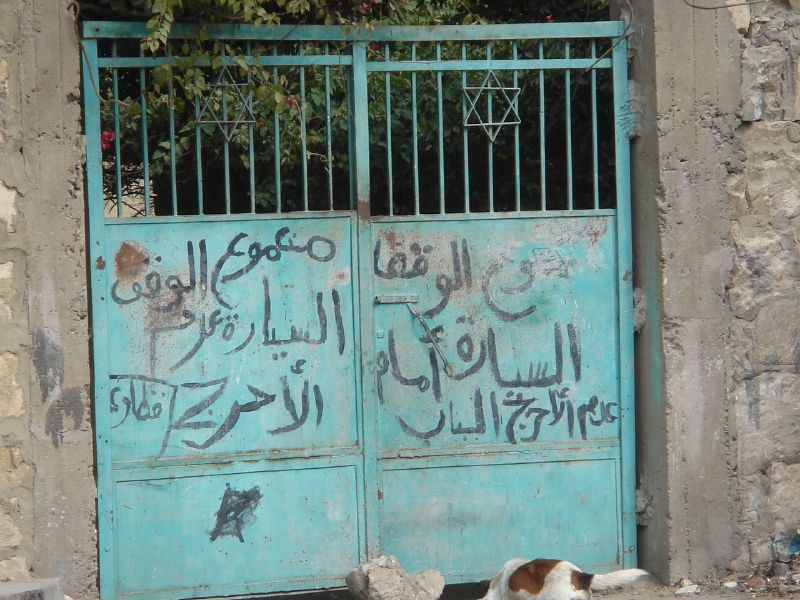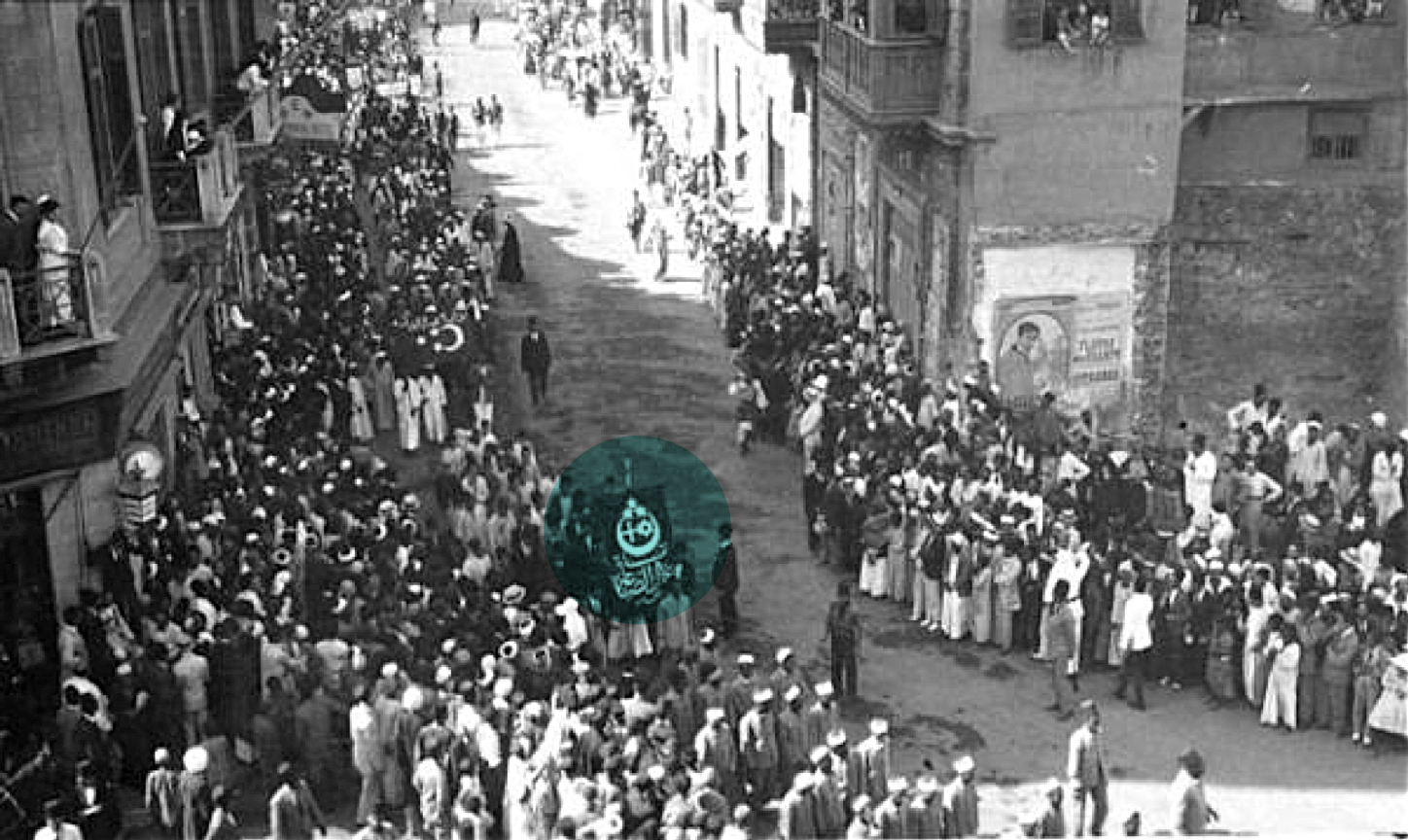25 — March 2019

The Last Five Jews in Egypt
Maha El Hissy
The last five Jews in Egypt might have seen their numbers reduced to four by now.1 Information on the exact size of the shrinking Jewish community may be inaccurate, out of date, or based on Jews remaining in Cairo only, while excluding those in other parts of the country. The fact remains that the Jewish community in Egypt, that numbered between 65,000 and 75,000 in the mid-20th century, will have disappeared completely a few years from now. Comparing the first half of the last century to the second in terms of the presence and the role of Jews in Egyptian society tells a story of two extremes: inclusion and belonging followed by expulsion, pluralism followed by a fanatical striving for national “purity.” This history contrasts a Golden Age with a Second Exodus, with the year 1956 marking a turning-point.
1919: East-West Encounters
During World War One, the number of Jews living in Egypt increased significantly. The rise of fascism and anti-Semitic sentiments in Europe, and the evacuation from Palestine of thousands of Jews around the year 1917 under Ottoman rule, resulted in the arrival of a large wave of exiles in Egypt. The majority settled in Cairo and Alexandria. At that time, Egypt was known for providing a friendly environment for expats, not to mention that Egyptian Jews were obviously well-integrated in society. In fact, this large wave of migration connects Europe’s cultural heritage to the Middle East, Egypt being a hub for this encounter, illustrating the intertwined histories of East and West.
The striking reality is so hard to imagine today that it sounds more like a fairytale. In light of the Arab-Israeli conflict, all things Jewish have been condemned and eradicated from Egyptian cultural memory. It is not uncommon to find book vendors on the street selling copies of Hitler’s Mein Kampf nor to get into a conversation with a taxi driver who will chitchat about adoring Hitler, “this great man who fought the Jews.” However, in the documentary film Jews of Egypt (2013) by Egyptian director Amir Ramses, several interviewees, most of them Jews or member of Jewish families who lived in Egypt before migrating to France, agree that hostility or negative discrimination against Jews simply did not exist in Egyptian society until 1935. A famous picture taken during the popular revolution of 1919 led by Saad Zaghloul against the British occupation of Egypt and Sudan shows protestors waving a flag with a crescent enclosing the cross and the Star of David as a sign of unity, diversity, inclusion, and belonging (figure 1). Displaying the symbol of Judaism is out-of-bounds in contemporary Egypt, where Judaism is often conflated with Zionism.

Many of the middle- and working-class Jews, mainly small business owners, jewelers and merchants, resided in Haret el-Jahud, “The Jewish Quarter”, where Jews lived together with Muslims and Christians – this was not a ghetto inhabited by a minority. Today the neighborhood, which is said to have been home for Jews for over 700 years, is more of a Chinatown. Only a few neglected synagogues remain, most of them in miserable condition, as traces of the area’s Jewish heritage. While the neighborhood’s older generation still remembered some of the Jewish residents, its history and the Jewish presence in Egypt in general is now largely unknown to later generations. An article published in the widely-circulated newspaper Al-Ahram English depicts the current alienation from Egyptian-Jewish history in Haret el-Yahud. A young man points out a synagogue that was difficult to find: “This is all that is left. We know that behind the brick wall is a synagogue, but it has no entry gates.”2 As the article continues, it becomes clear that no-one knows anything further – neither the name of the Jewish house of worship, nor the date it was built.
Until the end of World War Two, elite European-style department stores contributed greatly to the nation’s trade, economy, and modernization. Les Grands Magasins Cicurel, owned by the Cicurel family, was an elite department store chain near the Opera House in downtown Cairo. It was damaged in a bombing in 1948, and burned down in the Cairo Fire of 1952 in a serious wave of riots and lootings also known as “Black Saturday.” Benzion, Gattegno and Hannaux are names of other European-style stores owned by Jews. All were nationalized or liquidated in the aftermath of the Egyptian coup d’état in 1952.
Haret el-Jahud is also the name of a local TV series broadcast in 2015 – an interreligious love story between a Muslim and a Jewish Egyptian that begins around 1948, the crucial year of the founding of the state of Israel. The tale of two lovers often becomes mired in romanticized and nostalgic portrayals of the past, but can be read as a national allegory of the fabric of a society shifting from diversity to extreme nationalism after hundreds of years of peaceful coexistence. The Muslim protagonist is a soldier in the Egyptian army, fighting the British in Egypt and supporting the Palestinian resistance against Israel in 1948. When war breaks out against Israel, his native Egyptian Jewish lover, despite her loyalty to her country of birth, finds that she is now stigmatized as an outsider in the only society to which she has ever belonged. Together with the other members of her family, she is forced to emigrate with no hope for return. With her departure, a love story that united people beyond religious identity comes to an end. The story revives a forgotten part of Egyptian history, embeds historic facts in a narrative of refuge and expulsion, and sheds light on some of the dilemmas around loyalty, multilayered identities, manifold and conflicting belongings.
1956: The Point of No Return
It is perplexing how immensely things changed between 1948 and 1956 – in less than a decade. Before that, several factors had a cumulative effect on the Jewish community: a Zionist youth movement was established in Cairo; anti-colonial sentiments grew stronger against the British, as well as all groups supported by them, including foreign Jews; the interest in the Palestinian question grew stronger among Egyptians; and rising radicalism among the Muslim Brothers eventually resulted in hostility directed against Jews.3
With the ascendancy of the free officers in Egypt, a group of military officers that aimed to overthrow the country’s ruler, King Farouk, and thereby terminate the monarchic regime, Gamal Abdel Nasser soon took over the presidency and led an Arab nationalist movement of anticolonial liberation. His call for Pan-Arab unity reached beyond Egypt and spread to other Arab countries, including Syria. A serious crisis began in 1956, the date I choose to regard as a turning point, when Nasser delivered a speech to assembled crowds announcing that he was nationalizing the Suez Canal, that connects the Mediterranean and the Rea Sea. The canal, that had hitherto been under French and British control, was rendered national property. Nasser’s declaration was celebrated as a sign of independence from foreign influence. However, in reaction to the president’s announcement, France, Britain and Israel launched a war against Egypt a few months later. Anti-Jewish sentiment escalated rapidly and became irreversibly entrenched. Ironically, it is said that Nasser grew up in Khoronfoush Street, just outside Haret el-Jahud. However, in the 1950s and 1960s, he implemented forced expulsions of British, French, Greek and Italian citizens, but also of Jews, who emigrated to Israel, France, or the United States, after their property was confiscated. Some members of the Jewish community were sent to prison.4 There are accounts of Egyptian Jews being forced to leave, their passports stamped “Exit, With No Return.”5 In the two following decades, attacks, imprisonment and confiscation only increased.
Today, the last five Jews in Egypt – all of them women – fight to keep their heritage alive. In recent years, Magda Haroun, 66, the president and youngest member of the Jewish community, has raised concerns about what will happen to Egypt’s Jewish heritage – including relics, historical documents, and synagogues – when the community no longer exists.
2019: The Jewish Cemetery – a Clearway
At first glance, the picture in the first column depicts what appears to be simply a neglected gate. Inscribed on each side, in large, handwritten Arabic, is more or less the same prohibition, written with incorrect grammar and syntax: “No parking to avoid inconvenience.” Only a closer look might lead the observer to recognize at least one of the two Stars of David engraved on each side of the gate above the no-parking warning. The star on the left is partly camouflaged against a distracting background of tree leaves. This is the gate to the Jewish cemetery of Cairo, which is said to be the oldest in the world. The framing of the picture still allows one to spot other signs of negligence: a street cat or a dog eating something, perhaps leftovers or food waste, and a surrounding wall in need of renovation. The gates shown in the picture are always closed, as the cemetery is not open to the public. However, a side entrance, where some of the walls have collapsed, makes the place accessible to visitors.6 Some tombs have been destroyed completely; others, including the tomb of Magda Haroun’s father, have been vandalized.7 Behind the gates, many of the Jews who lived in Egypt are buried, together with their memories, a rich history, and stories that barely any of the people living nearby want to remember. This is a picture about refuge – about expelling, denying and eradicating an essential part of Egyptian cultural memory.
Notes
- 1An article in Jüdische Allgemeine that goes back to 2015 counted ten survivors. In 2017, The Times of Israel referred to eighteen Jews. However, the most recent article on the topic counted five Jews remaining in Egypt
- 2Montasser, Farah. “The Jewish Alley of Old Cairo”. Ahram Online. 11 May 2011.
- 3Laskier, Michael M. “Egyptian Jewry under the Nasser Regime, 1956-70.” Middle Eastern Studies, vol. 31, no. 3, 1995, pp. 573–619, here: p. 574-5.
- 4See: Jewish Refugees from Arab Countries
- 5Premium exit with no return. The real story of how Egypt expelled its jews.
- 6See The Jewish cemetery of Cairo – Egypt.
- 7Head of Egyptian Jewish community: “My father's tomb was vandalized”
